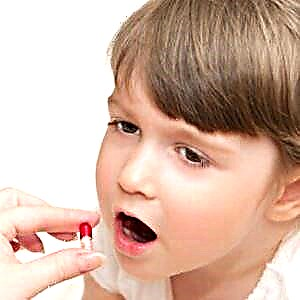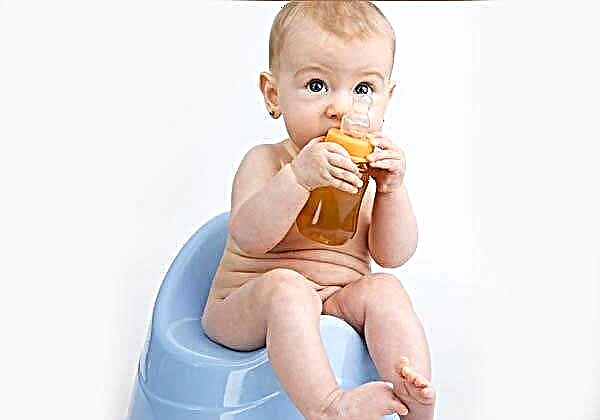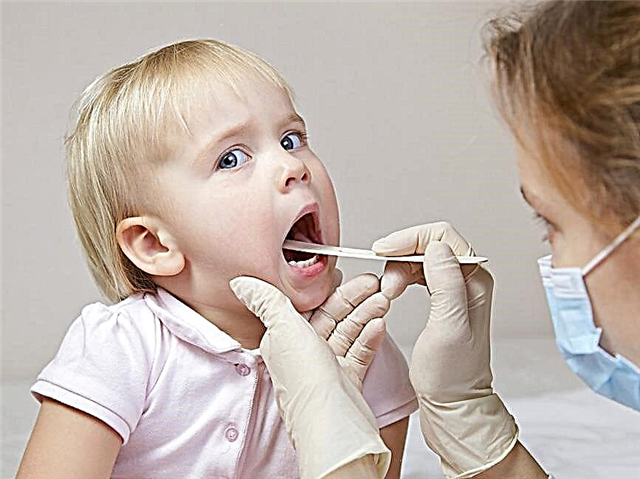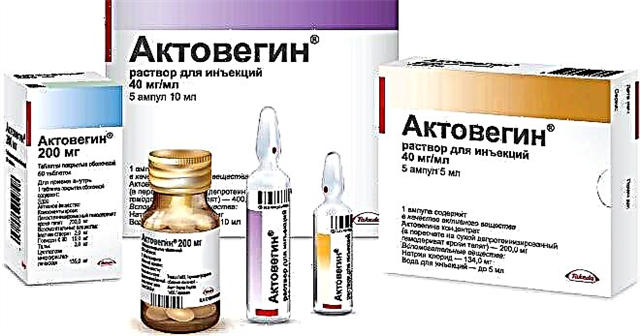Peptic ulcer disease is a common digestive disorder that not only makes life very uncomfortable, but also has some dire consequences. Fortunately, for most, they can be cured, and serious complications can be avoided with appropriate drug therapy and measures to prevent ulcer recurrence.
What is a peptic ulcer?
A peptic ulcer is an erosion of the inner surface of the stomach or duodenum (the first section of the small intestine). These erosions are called "peptic" ulcers because they are associated with the activity of acid and pepsin (a digestive enzyme) on cells.
A peptic ulcer in the stomach is called a stomach ulcer. If it is in the duodenum, it is a duodenal ulcer (DU).
Symptoms of a stomach and duodenal ulcer
- The main symptom of a peptic ulcer is abdominal pain.
 Pain is described as gnawing or burning, usually in the epigastric (upper) abdomen or just below the ribs on the right or left side.
Pain is described as gnawing or burning, usually in the epigastric (upper) abdomen or just below the ribs on the right or left side.
The specificity of pain depends on the location of the ulcer. With gastric ulcer in children, the pain is often aggravated by eating, and sometimes a child with a stomach ulcer may even subconsciously reduce food intake and even lose body weight.
In contrast, duodenal ulcers in children tend to cause pain between meals when the stomach is empty. And the pain is often relieved by eating. These children rarely lose weight and may even gain weight.
- If the stomach ulcer in children becomes large enough, it destroys a blood vessel, and bleeding occurs... Doctors call this "upper gastric bleeding" because the site of the bleeding is in the upper digestive system.
The symptoms can be very dramatic (for example, vomiting of bright red blood) and cannot be ignored.
If the bleeding is very slight, symptoms may be less pronounced:
- weakness from anemia, dizziness;
- cardiopalmus;
- abdominal cramps caused by movement of blood that irritates the intestines;
- tarry stools caused by the digestion of blood in the intestines.
A peptic ulcer located at the junction of the stomach and duodenum causes swelling in the stomach lining, which in some cases provokes the development of partial obstruction.
If so, symptoms may include bloating, severe indigestion, nausea, vomiting, and weight loss. Children with peptic ulcers also have a relatively high chance of developing gastroesophageal reflux disease and related symptoms, especially heartburn.
Symptoms of gastric and duodenal ulcers in children may mimic other digestive conditions or health problems. Therefore, in case of such complaints, an in-depth examination is necessary.
Causes
In the past, it was believed that stress and poor nutrition caused the disease. Later, researchers stated that stomach acids contributed to the formation of most ulcers. Today, however, research shows that most ulcers develop as a result of infection with a bacterium called Helicobacter pylori.
1. Helicobacter pylori.
Research has shown that most ulcers are caused by Helicobacter pylori. Although the other factors listed below can also cause it, H. pylori is now considered the main cause of most of them. This bacterium lives in the stomach and, along with the acid secretion, damages the tissues of the stomach and duodenum, provoking inflammation and ulcers.
2. Acid and pepsin.
These powerful digestive juices are believed to contribute to ulceration. In ideal situations, the stomach can defend itself against these fluids in several ways:
 the stomach produces mucus that covers the walls. It protects tissues from the aggressive effects of digestive enzymes;
the stomach produces mucus that covers the walls. It protects tissues from the aggressive effects of digestive enzymes;- The stomach can produce a chemical called bicarbonate, which neutralizes excess acid and breaks it down into less harmful substances.
- blood circulation in the stomach lining and cell renewal and active repair help protect the stomach.
3. Non-steroidal anti-inflammatory drugs.
The most famous NSAIDs are Aspirin, Ibuprofen, and Naproxen Sodium. They are found in many over-the-counter medications used to reduce fever, headaches, and other pain.
NSAIDs can affect the defense mechanisms of the stomach in several different ways:
- they can make the stomach vulnerable to the harmful effects of acid and pepsin, interfering with the stomach's ability to produce mucus and bicarbonate;
- they can interfere with cell repair and blood flow in the stomach walls.
4. Smoking teenagers.
Research shows that smoking cigarettes can increase a teen's chances of developing an ulcer. Smoking inhibits the healing of existing ulcers and promotes relapse.
5. Caffeine.
Drinks and foods containing caffeine stimulate acid production, which can worsen existing ulcers.
But the stimulation of stomach acid cannot be attributed to caffeine alone.
6. Stress.
Emotional stress is no longer believed to be the culprit for peptic ulcer disease, but children experiencing it often report increased pain from pre-existing ulcers.
However, physical stress can increase the risk of developing ulcers, especially in the stomach. For example, children with injuries (severe burns) and children who have undergone major surgery often need careful treatment to prevent ulcers and the complications of peptic ulcer disease.
Complications
Without proper treatment, a child with a peptic ulcer can have serious complications.

The most common problems are:
- bleeding. Because the lining of the stomach or duodenal wall is damaged, blood vessels can also be partially destroyed. This causes bleeding;
- perforation (loss of integrity). Sometimes deep defects develop in the walls of the stomach or duodenum, and bacteria and partially digested food can seep through the holes formed into the sterile abdominal cavity and cause peritonitis (inflammation of the peritoneum) and inflammation of the abdominal cavity itself;
- constriction and obstruction. An ulcer in children located in the outlet of the stomach can cause tissue edema and scarring, which narrow or completely close the intestinal lumen.
Diagnostics
Since the tactics of treatment are different for different types of peptic ulcers, it is important to correctly diagnose it and the presence or absence of H. pylori before starting therapy. For example, the treatment of ulcers caused by anti-inflammatory drugs is significantly different from the treatment of ulcers caused by H. pylori.
In addition to a complete medical history and physical examination, diagnostic procedures are performed:
 X-ray of the upper intestine. Examination of the esophagus, stomach and duodenum. The child will drink a liquid - a barium suspension. It is a metallic liquid used to visualize the inside of the intestine on an X-ray. The doctor will then take x-rays of these organs.
X-ray of the upper intestine. Examination of the esophagus, stomach and duodenum. The child will drink a liquid - a barium suspension. It is a metallic liquid used to visualize the inside of the intestine on an X-ray. The doctor will then take x-rays of these organs.- Endoscopy. A test that uses a small flexible tube filled with light and a camera lens at the end (endoscope) to view the inside of the digestive tract.
- Taking tissue from the inside of the intestine (biopsy) carried out for examination and testing. Endoscopy can also check the pH level of the medium and the amount of acid entering the area.
- Definition of Helicobacteria:
- tissue tests performed during endoscopy;
- blood tests that determine the presence of antibodies to H. pylori. Blood tests are easy to do, although a positive test may indicate past exposure to H. pylori rather than active infection;
- stool tests that detect the presence of H. antigens
- breath tests.
Peptic ulcer treatment in children
Treatment will depend on the child's symptoms, age, and general health.
Lifestyle change
In the past, doctors have recommended that a child with peptic ulcer disease should not be given spicy, fatty, or acidic foods. However, a bland diet is now known to be ineffective in treating or preventing ulcers.
No particular diet helps most children with peptic ulcers. If certain foods seem to be making your condition worse, talk to your doctor about the problem.
Some teenagers smoke cigarettes. Parents do not always know that their children smoke. Smoking inhibits the closure of the ulcer and provokes the development of the disease.
Medications
Doctors can treat stomach and duodenal ulcers with several types of drugs:
 antibiotics. Used to kill bacteria;
antibiotics. Used to kill bacteria;- H2 blockers. Reduces the amount of acid produced by the stomach by blocking histamine, a powerful stimulant of acid secretion;
- proton pump inhibitors. More completely block the production of gastric acid, stopping the acid pump of the stomach - the final stage of acid secretion;
- mucosal protection means. These medicines protect the stomach lining from acid damage. Does not affect the production of gastric juices.
These drugs or treatments are often used in combination to treat H. pylori.
Surgical intervention.
In most cases, ulcer medications will heal the ulcer quickly and effectively, and eliminating H. pylori prevents most peptic ulcers from recurring.
However, in rare cases, the child's body does not respond to medication and surgery may be required.
Care for children
If your child is diagnosed with H. pylori peptic ulcer disease, make sure they are taking all the antibiotics as directed by their doctor. Even if the symptoms go away, the infection may not go away until treatment is over.
 if the ulcer in children is medication-related, your doctor will advise you to avoid NSAIDs, including any medications containing ibuprofen or aspirin;
if the ulcer in children is medication-related, your doctor will advise you to avoid NSAIDs, including any medications containing ibuprofen or aspirin;- Also, be sure to give your child the prescribed acid-reducing agent;
- most doctors do not recommend dietary restrictions for a child with a peptic ulcer. Good nutrition with a variety of foods is essential for the healthy growth and development of your baby;
- also make sure your child avoids coffee, tea, soda, and caffeinated foods that stimulate stomach acid and aggravate ulcers.
Prevention
Preventing Helicobacter pylori infection will reduce the risk of a child developing peptic ulcer disease. It is not yet clear how this infection spreads. But the following measures will help reduce the risk of developing a peptic ulcer in a baby:
- wash your hands often;
- not to contact people who have symptoms of peptic ulcer disease;
- do not eat or drink dirty food and water.
Peptic ulcer disease in children can be an unpleasant experience for parents and children, but with timely and proper treatment, almost all ulcers will heal.

 the stomach produces mucus that covers the walls. It protects tissues from the aggressive effects of digestive enzymes;
the stomach produces mucus that covers the walls. It protects tissues from the aggressive effects of digestive enzymes; X-ray of the upper intestine. Examination of the esophagus, stomach and duodenum. The child will drink a liquid - a barium suspension. It is a metallic liquid used to visualize the inside of the intestine on an X-ray. The doctor will then take x-rays of these organs.
X-ray of the upper intestine. Examination of the esophagus, stomach and duodenum. The child will drink a liquid - a barium suspension. It is a metallic liquid used to visualize the inside of the intestine on an X-ray. The doctor will then take x-rays of these organs. antibiotics. Used to kill bacteria;
antibiotics. Used to kill bacteria; if the ulcer in children is medication-related, your doctor will advise you to avoid NSAIDs, including any medications containing ibuprofen or aspirin;
if the ulcer in children is medication-related, your doctor will advise you to avoid NSAIDs, including any medications containing ibuprofen or aspirin;

